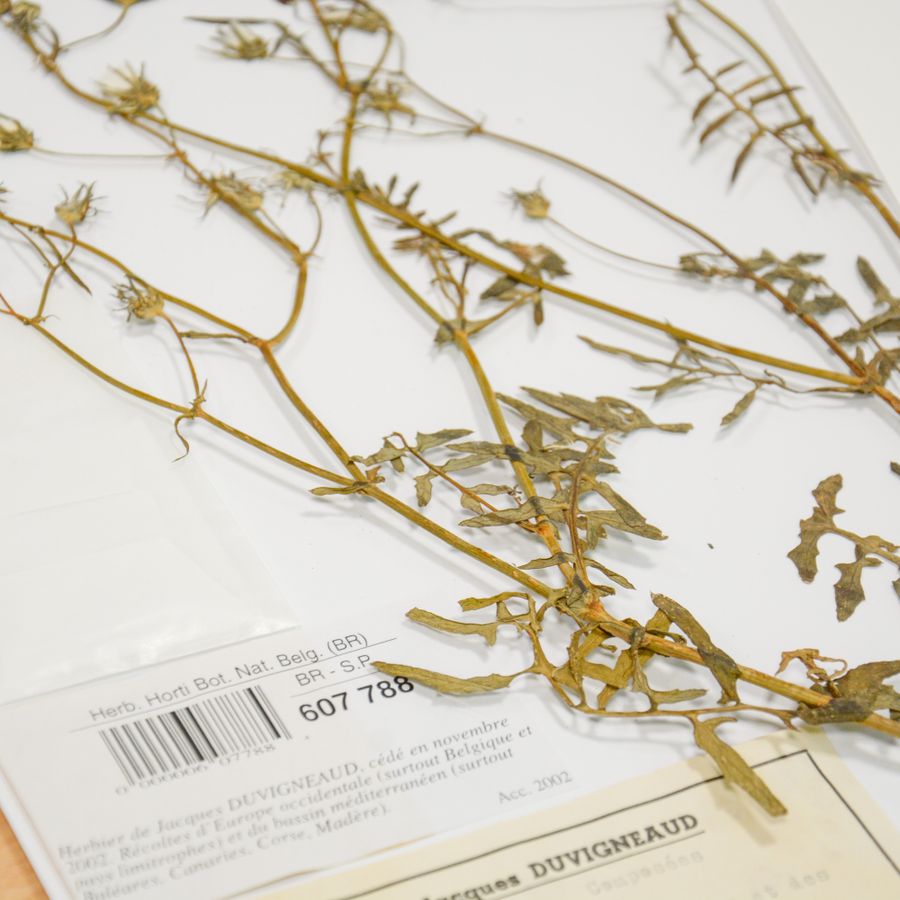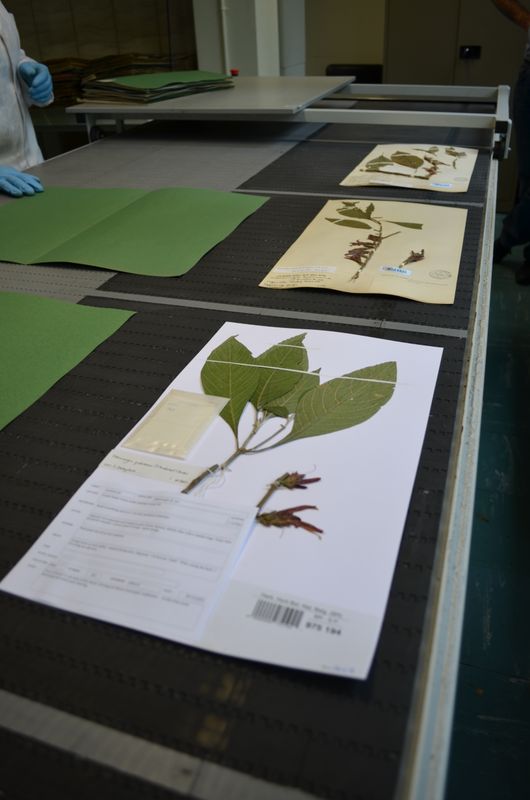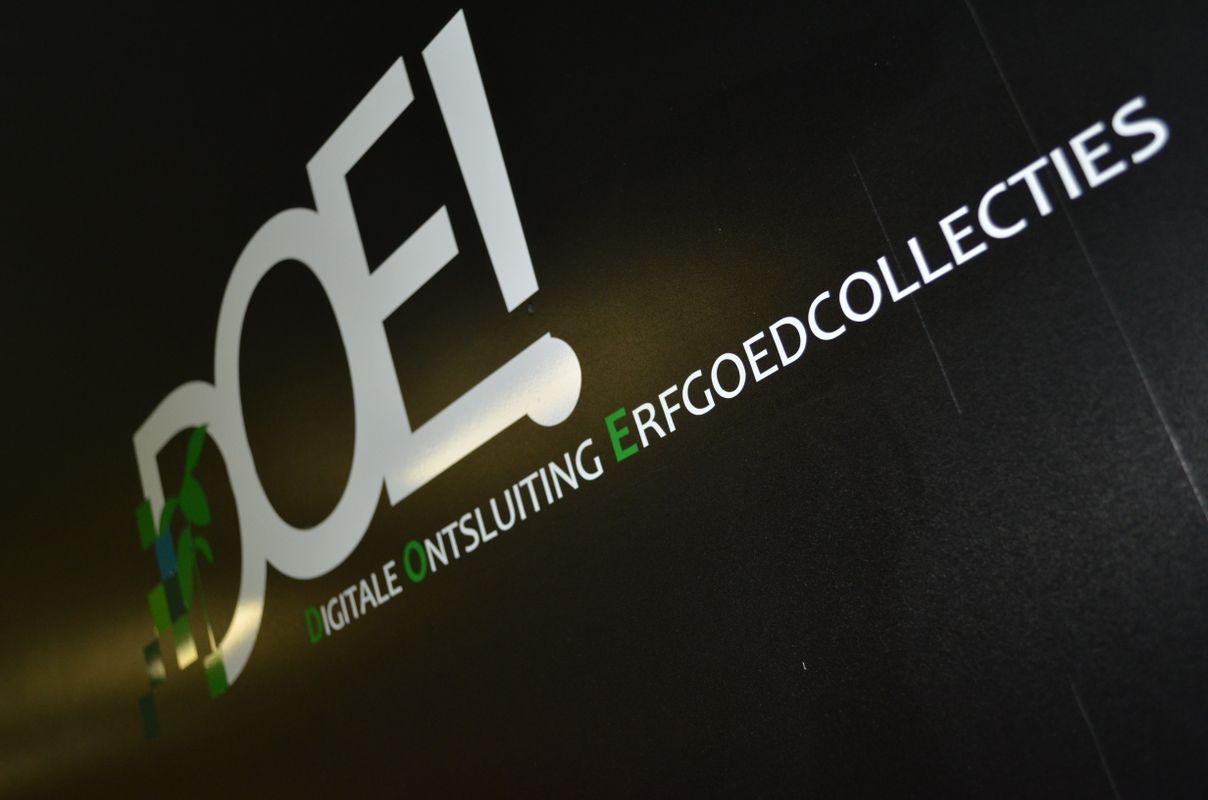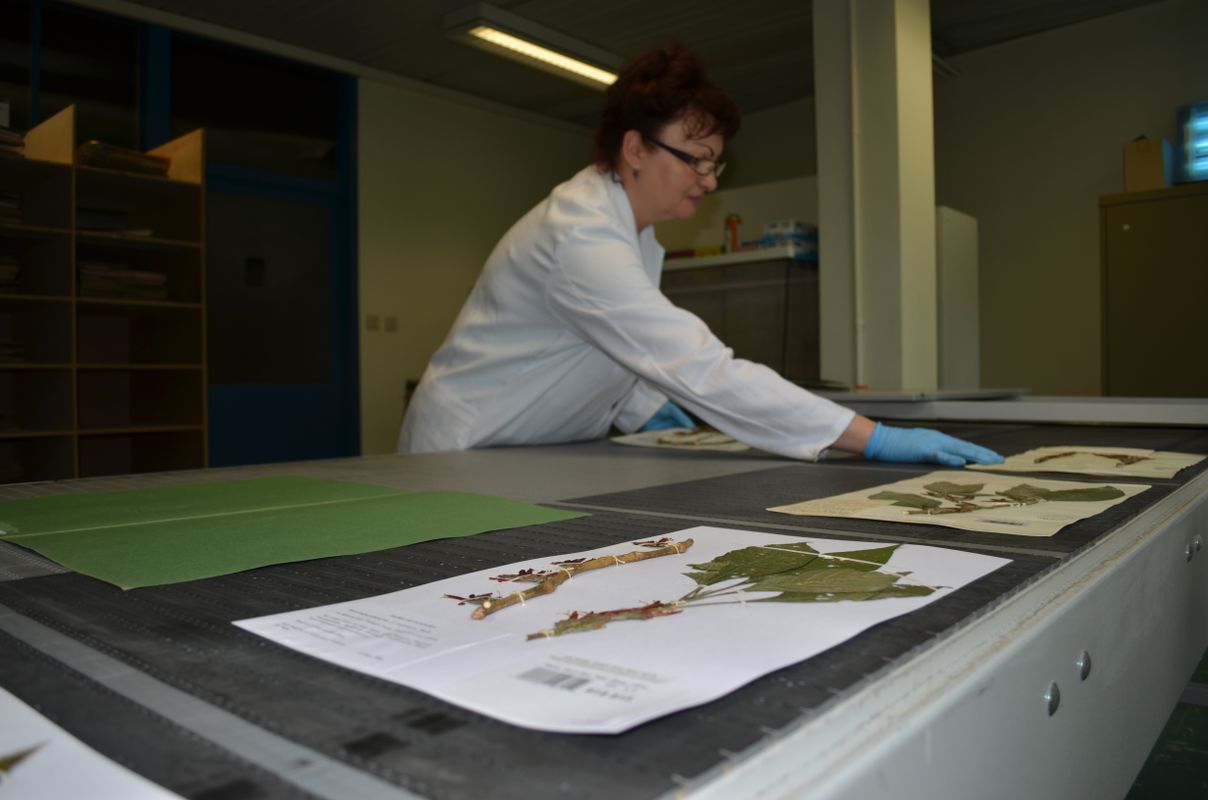
Digitisation
Available to all
Preserving and lending herbarium specimens involves risks. Degradation, loss, and damage can never be entirely ruled out. A loaned specimen also cannot be consulted by anyone else. Digitisation of the collection pieces offers an answer to this problem.
Although there were a few attempts at collection digitisation before 2003, the first real round of digitisation began in 2003. The projects were supported by grants from the European Union (ENBI), the Belgian Biodiversity Platform, and the Global Biodiversity Information Facility (GBIF). They were mainly pilot projects aimed at testing the feasibility of digitising herbarium specimens. Other externally funded projects followed, such as Biodiversity Heritage Library (BHL), Open Up! for Europeana 2011-2014, Linnaeus Link, BibBelgium, Impala, and Erfgoed Vlaanderen 2013-2014. The majority of the projects were aimed at a specific target group whereby existing data and images were released.
The largest digitisation project in the period up to 2014 was undoubtedly the Global Plants Initiative (funded by the Mellon Foundation). This project aimed to digitise all botanical type specimens worldwide, a total of 60,000 types. The Botanic Garden was one of the first partners. All digitised types were made available on the JSTOR website.
Since 2015, Meise Botanic Garden has received a grant from the Flemish government to optimise the existing digitisation infrastructure and to digitise 2.7 million herbarium specimens. This project was christened the DOE! Project, which stands for Digitale Ontsluiting Erfgoedcollecties (Digital Access to Heritage Collections). Alongside an external partner, we photograph some 5,000 herbarium specimens a day using a conveyor belt. Via a crowdsourcing platform, doedat.be, we add the label data with the help of many volunteers. With this platform we want to involve citizens in the wonderful world of collections.
In March 2018, our digital herbarium, botanicalcollections.be, was launched. Since then, we have made our herbarium accessible to everyone. With the current digitisation, more than 70% of the collection will soon be available.
Acquiring funds to make our collections accessible remains important and allows us to further valorise our collections and make them available to the whole world.







